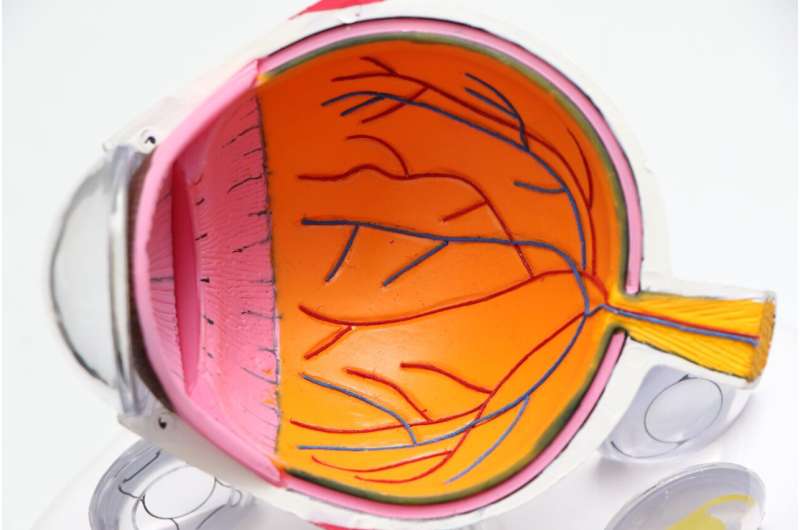This article has been reviewed according to Science X's editorial process and policies. Editors have highlighted the following attributes while ensuring the content's credibility:
fact-checked
peer-reviewed publication
trusted source
proofread
AI finds twisting of eye vessels could cause high blood pressure and heart disease

Research led by scientists at St George's, University of London, has discovered 119 areas in the genome that help to determine the size and shape of blood vessels at the back of the eye, and that an increase in "twisting" of the arteries could cause high blood pressure and heart disease. The study is published in PLOS Genetics.
It's relatively easy to take a high-resolution digital image of the back of the eye, allowing medical professionals and researchers to visualize the retina and its associated blood vessels and nerves. The eyes can act as a "window" into the body, allowing researchers to directly study characteristics of these blood vessels and gain information about the body.
Scientists have previously shown that the shape and size of blood vessels on the retina are associated with health conditions including high blood pressure, heart disease, diabetes and obesity. However, until now, little was known about how genetics play a role in determining the architectural characteristics of these blood vessels.
Researchers studied retinal images from nearly 53,000 people who were enrolled into a large study called the UK Biobank.
They applied artificial intelligence (AI) technology to the images to quickly and automatically distinguish between the different types of blood vessels (arteries and veins), and to measure blood vessel width and the extent to which the vessels twist and turn.
The team then used a technique called a genome-wide association study (GWAS) to determine whether there were similarities in the DNA of people with similar blood vessel characteristics. They carried this out on genetic data of 52,798 UK Biobank members.
The team then repeated the analyses on 5,000 people who were part of the EPIC-Norfolk's Eye Study. Together with the UK Biobank, they identified 119 sections of the genome which are associated with retinal blood vessel shape and size characteristics—more than any previous study. Of the 119 sections found, 89 regions were linked to arterial twisting.
The level of twisting and turning of retinal arteries was the feature that was most strongly genetically determined. A higher level of twisting to the arteries also appeared to cause high diastolic blood pressure and heart disease. Diastolic blood pressure is a measure of the pressure in the arteries when the heart is between beats.
Professor Christopher Owen, head of chronic disease epidemiology at St George's, University of London said, "It had been thought that high blood pressure might cause twisted arteries, but our work unveils that it's actually the other way around. This genetic information is a vital piece of the puzzle in our understanding and could pave the way for new treatments in the future.
"Retinal imaging is already a mainstay in high-street optometrists. Our AI analysis of these images as part of routine eye checks could easily be done as part of a health check to identify those at high risk of developing high blood pressure or heart disease and in need of early intervention."
More information: Xiaofan Jiang et al, GWAS on retinal vasculometry phenotypes, PLOS Genetics (2023). DOI: 10.1371/journal.pgen.1010583





















